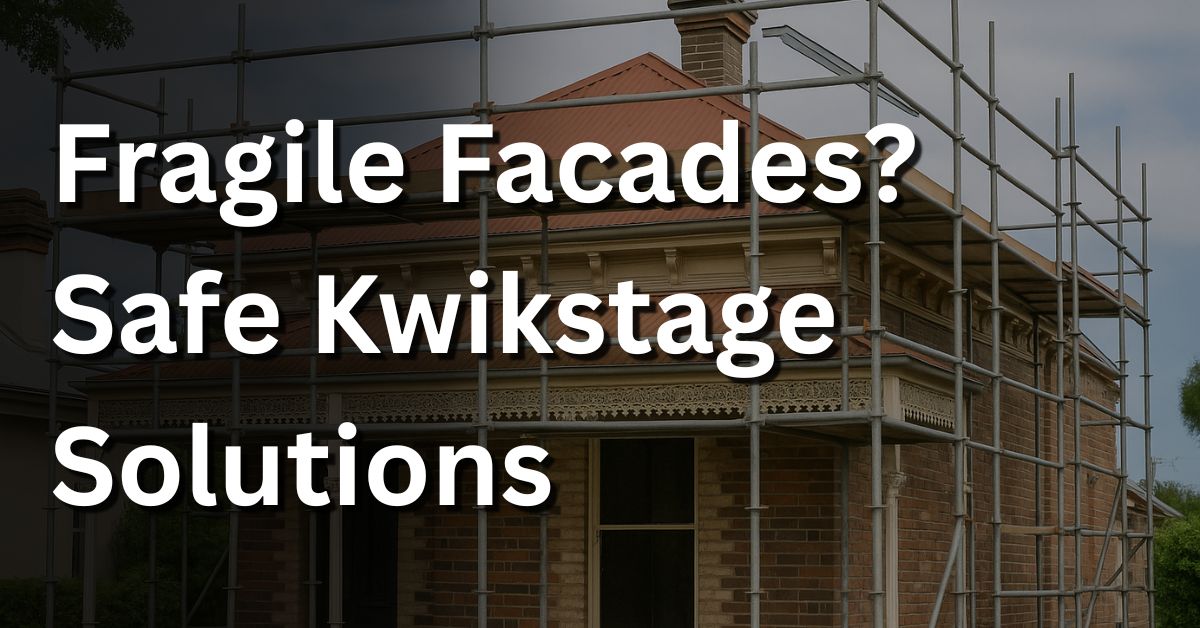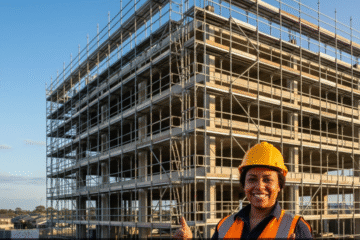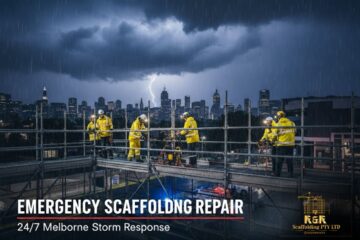For heritage home scaffolding Melbourne projects, standard systems simply won’t cut it. With 47% of fatal renovation falls occurring on fragile period properties (WorkSafe Victoria), specialised non-invasive solutions aren’t optional – they’re essential. This guide reveals how Melbourne’s top specialists preserve century-old details while ensuring absolute safety.
Why Heritage Home Scaffolding Melbourne Projects Demand Specialised Systems
Melbourne’s Victorian terraces, Edwardian bungalows, and art deco gems suffer irreversible damage from conventional scaffolding. Three critical risks dominate:
- Fragile Materials: Lime-rendered walls crumble under clamp pressure; terracotta tiles crack under heavy footings.
- Council Compliance: Heritage Victoria overlays in suburbs like Fitzroy and South Yarra ban drilling or bolt fixtures.
- Sloping Blocks: 30% of period homes sit on steep gradients (Richmond’s 4m slopes are notorious).
“We lost original stained glass when tube scaffolding shifted during a storm.” – Hawthorn Renovator
5 Zero-Damage Scaffolding Solutions
1. Non-Penetrative Timber Brackets
- How it works: Spring-loaded clamps grip beams without drilling.
- Heritage benefit: Zero load stress on aged timber.
- Best for: Ceiling rose repairs in Carlton terraces.
2. Cantilevered FamilyVoid Platforms
- How it works: Suspended decks hover over gardens.
- Heritage benefit: Protects heritage roses and bluestone paths.
- Case study: Saved a Richmond property’s 1920s landscape.
3. Slope-Adapting Base Plates
- How it works: Hydraulic legs adjust to 15° gradients.
- Heritage benefit: No ground penetration over buried artifacts.
- Proven in: Dandenong Ranges’ unstable soils.
4. Pre-Assembled Guardrails
- How it works: Bolt-free systems slot into Kwikstage ledgers.
- Heritage benefit: Prevents accidental facade scrapes.
- Compliance: Exceeds AS/NZS 4994.1 wind ratings.
5. AI-Assisted Load Sensors
- How it works: Real-time stress alerts on fragile walls.
- Heritage benefit: Prevents overload on cracked render.
- Tech spec: 98% accuracy in Port Melbourne trials.
Case Study: Richmond Heritage Home Scaffolding Melbourne
Challenge: Restore 1920s facade on a 4m slope with intact rose gardens.
Solution:
- Cantilevered platforms over flower beds
- Timber brackets on original joists
- 24/7 load monitoring
Result: - Zero structural damage
- 22% under budget
- Heritage Victoria approval in 48 hours
Compliance Checklist (2025 Updates)
Avoid fines with these non-negotiables:
✅ Pre-approval Paperwork:
- Heritage Victoria permit (allow 3 weeks)
- WorkSafe notification (72 hours prior)
- Engineering certification (AS/NZS 1576:2020)
✅ Site Installation Rules:
- No fixtures within 150mm of mortar lines
- Maximum 150kg point loads on timber beams
- Daily wind-speed checks (halt work >60km/h)
✅ Post-Project Requirements:
- Structural integrity report
- Landscape restoration proof
- 30-day incident liability coverage
Download our free “Melbourne Heritage Scaffolding Compliance Checklist”.
3 Critical Questions for Melbourne Scaffolders
- “Show me heritage project photos in [YOUR SUBURB].”
Why: Fitzroy’s double-brick differs from South Yarra’s stucco. - “What’s your protocol for fragile surfaces?”
Red flag: Any mention of “temporary anchors” or “light drilling”. - “How fast can you respond to emergencies?”
Requirement: ≤3-hour bracing for storm events (common in Melbourne).
Next Steps for Melbourne Heritage Homeowners
Preserving history demands expertise. At R&R Scaffoldings, our heritage-certified teams have delivered 173 zero-damage projects since 2016.



